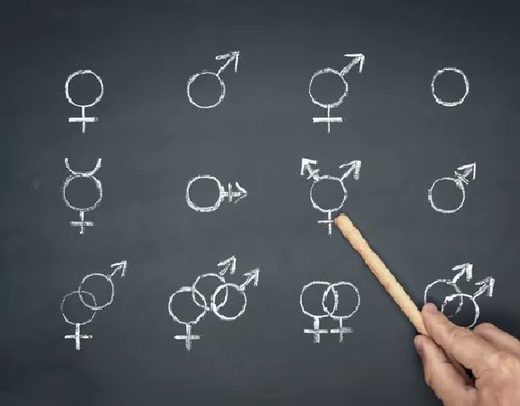
California kindergartners could soon learn all about the “gender stereotypes” plaguing society, the importance of accepting transgender lifestyles, a kaleidoscope of 15 different genders to choose from, and other “health guidelines.”
Victor Skinner
EAGNEWS.org
Fri, 18 Jan 2019 17:34 UTC

California kindergartners could soon learn all about the “gender stereotypes” plaguing society, the importance of accepting transgender lifestyles, a kaleidoscope of 15 different genders to choose from, and other “health guidelines.”
The California Department of Education’s proposed Health Education Framework for K-3 students, which would be mandatory with no opt-out option for parents, promotes a decidedly liberal perspective on gender and sexuality many parents would likely disagree with, and some educators are speaking up, Christian Headlines reports.
Chapter three of the proposed guidelines encourages teachers to “discuss gender with kindergartners by exploring gender stereotypes and asking open-ended questions, such as what are preferred colors, toys, and activities for boys/girls, and then challenging stereotypes if presented.
“Throughout this discussion, show images of children around the same age who do not conform to typical gender stereotypes,” the state advises. “Examples do not have to be exaggerated or overt. Simple differences, such as colors or toy preferences, can demonstrate acceptance of gender non-conformity.”
“While students may not fully understand the concepts of gender expression and identity, some children in kindergarten and even younger have identified as transgender or understand they have a gender identity that is different from their sex assigned at birth,” according to the guidelines. “This may present itself in different ways including dress, activity preferences, experimenting with dramatic play, and feeling uncomfortable self-identifying with their sex assigned at birth.”
Comment: If young children have difficulty understanding the concepts of ‘gender expression’ then why in the world are adults listening to children who say they are transgender?!
That’s where California bureaucrats come in with recommended reading to help explain the confusion.
One book recommended in the guidelines is “My Princess Boy,” described as “an age-appropriate book that can be used to demonstrate gender differences and inclusion.”
Christian Headlines reports:
Another recommended children’s book is Who Are You?: The Kids Guide to Gender Identity by author Brook Pessin‐Whedbee. The colorful book defines gender as “boy, girl, both, neither, trans, genderqueer, non-binary, gender fluid, transgender, gender neutral, agender, neutrois, bigender, third gender, two spirit….” All total, 15 possible genders are listed. The book says parents don’t know if a baby is a boy or a girl at birth. “Babies can’t talk, so grown-ups make a guess by looking at their bodies,” it reads.
Brenda Lebsack, board member for the Orange Unified School District and physical education teacher in the Santa Ana Unified School District, also pointed out other concerning portions of the proposed guidelines in a December column for EdSource.
“As a public educator for over 20 years, some changes in the proposed California Health Framework concern me,” Lebsack wrote, mostly because it “includes controversial teaching about sexual relations, sexual orientation and gender.”
She provided several examples:
The draft includes controversial teaching about sexual relations, sexual orientation and gender. In Chapter Five, Line 925, it states, “Some students may be non-monogamous and the term ‘partner(s)’ may be used to be more inclusive.” According to one resource for LGBTQ terms and definitions, recommended by GLSEN (Gay, Lesbian, Straight Education Network), the polyamorous sexual orientation is defined as “the practice of, desire to, or orientation toward having consensual non-monogamous relationships (i.e. relationships that may include multiple partners). This may include open relationships, polyfidelity (which involves more than two people being in romantic and/or sexual relationships which is not open to additional partners), amongst many other set-ups.”
In Chapter 3, Line 1847, the draft recommends the book Who Are You? for pre-K-3rd graders as a “guide” to develop their gender identity. This book introduces young children to the idea that gender is a spectrum. This means genders are unlimited and ever-expanding, rather than confined to two biological genders. In the book, gender is described as, “boy, girl, both, neither, trans, genderqueer, non-binary, gender fluid, transgender, gender neutral, agender, neutrois, bigender, third gender, two spirit…” In Chapter 5, Line 643, the draft introduces sexual orientations as a spectrum as well. LGBTQ+ is defined as an ever-changing spectrum with expanding concepts to include “queer, questioning, intersex, asexual, allies and alternative identities (LGBTQQIAA).” Other sexual orientations introduced in Chapter 6, Line 938 include “pansexual and polysexual.”
Lebsack explained the California Department of Education is currently reviewing feedback from two 60-day public comment periods for the new guidelines, which are exempted from parent opt out and notification requirements spelled out in the state education code.
And while the state isn’t expected to formally adopt the final draft of the guidelines for months, they’re already taking root in schools, preschool programs and child-care centers across the state.
“Although the framework will not be considered for adoption by the State Board of Education until May 2019, … books such as ‘Who are you?‘ with lesson plans have been provided to teachers and students through a free digital library, which can be accessed by public school teachers and administrators,” Lebsack wrote.








